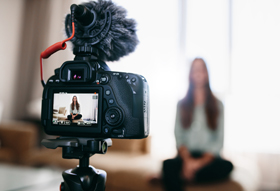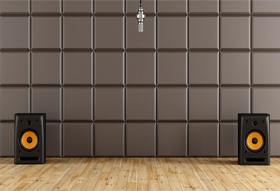
Podcasts and YouTube Vlogging

Podcasts and vlogs are undoubtedly a twenty-first century phenomenon. The popularity of vlogging has largely been fuelled by the rise of self-broadcasting platform YouTube, first established in 2005. With the YouTube outlet now worth $1.65 billion, most vloggers and podcasters are attempting to cut a healthy share of the revenue. Some of the platform's leading broadcasters are now pulling in a six-figure salary as a result of sharing a range of content.
Newer self-broadcasting platforms such as SoundCloud and Spotify have also influenced the growing popularity of podcasts. In fact, this industry will soon match the same heights of success achieved by that of the vlogging industry - podcasts are expected to reach over £1 billion in value by 2021. Considered by many as a good way to fill spare time when multi-tasking, the latest figures from Ofcom revealed that 6 million people in the UK frequently listened to podcasts in the latter half of 2018.
With podcasts and vlogs skyrocketing in popularity, more individuals are now turning their creative hand to divulging stories and video recording their lives via the two mediums. However, with this popularity comes competition - both the podcast and vlogging industries are cluttered spaces, making it increasingly hard for new creators to cut through the noise. When observing some of the highest-streamed content on platforms like YouTube and Spotify, it's clear to see why these videos and podcasts are most popular - they're of a considerably high-quality.

If you are still undeterred by the rife competition in the industry and are looking to produce content with high production values, ensuring good sound quality is the perfect starting point. Though many successful videos and podcasts are created in dedicated spaces such as studios, a significant number are filmed in home environments. Think all you will need is a good quality camera and a reasonably price microphone? Wrong.
Though it may not be visible in shot, many popular YouTubers - and indeed podcasters - are able to achieve studio-quality audio by installing specialist acoustic foam. Acoustic foam is a material that is able to assist in reducing reverberation, sound reflections and flutter echoes in recording spaces, and comes in a wide range of shapes and specifications. Most commonly, it is regularly seen in two shapes: flat chamfered, or convoluted. Each has its own specialist qualities, but both are more than suitable to be used in home recording environments - regardless of room size.
The most common type of acoustic foam insulation used for sound recording is Pyrosorb-S Class 0 acoustic foam, which is a fire resistant, flexible and open-celled polyurethane foam. It's high-density, open-cell quality makes it an excellent sound absorption material that is both safe and easy to handle. As it comes in a range of sizes - including cut to size - and comes with a self-adhesive backing, it is a quick and simple solution to improving the sound quality of videos by blocking outer noise, minimising echo and absorbing sound flutter.
If you are interested in learning more about how to order acoustic foam for your own recording space, be sure to read our follow-up blog. At eFoam, we are available to discuss your individual needs 7-days a week so please contact one of our friendly, expert representatives should you have any questions.

